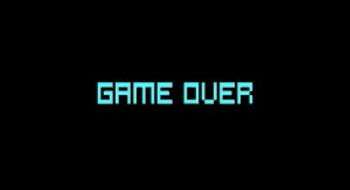

As employers look for new and innovative ways to engage employees in wellness and motivate them to commit to healthy behaviours, while reducing their healthcare costs, gamification is becoming more and more prevalent—both as an effective behavioural bridge from intention to action, and as an effective motivator in helping the new behaviour stick.
Gamification is the application of gaming mechanics in a non-gaming environment. Earning points or other rewards according to rules, moving through levels or titles, as well as the inclusion of a social component where participants can compete with each other, share their own accomplishments or interact with other participants for support and encouragement are all hallmarks of this genre. In fact, chances are you are already involved in something that has been gamified. If you collect frequent flyer miles that you can accumulate and then trade for flights, work toward “elite” status or collect loyalty points at a retailer that you can amass for discounts, free products, or a gold card (I’m looking at you, Starbucks), a piece of your world is already gamified.
Adding elements of gaming to wellness programming creates a motivating and fun environment while encouraging behavioural change. Employees gain a greater sense of control over their health through their participation, and get a sense of accomplishment by winning the prizes or other rewards built into the program. Participants receive credible health information and real-time feedback on their progress. The social interaction aspect of gamified wellness provides not only an opportunity for competition, but also a virtual support network for those making changes in their lives.
Gamified wellness has additional benefits over traditional wellness programs for employers as well. Beyond the increased satisfaction, employee engagement and improved employee health that workplace wellness programs generate for its participants, gamified wellness drives measurably greater engagement and motivation by feeding into the psychology of competition and reward systems. But most notably, gamification creates an opportunity for credible and robust health data collection that can then be integrated with other claims data for a holistic and more accurate picture of employee health.
In the American health benefits environment, gamification has been around for about five years, with numerous options of wellness programs employers can implement. More recently, this genre has started gaining momentum as health insurers try to bring value-added services to clients struggling to manage increasing health insurance costs. Aetna, Blue Shield, Cigna Health, Humana, UnitedHealth and WellPoint all offer games that can support workplace wellness initiatives like smoking cessation, making healthy food choices or increasing physical activity, all by tracking activities and earning points, badges, or levels or status. While these games vary in terms of their sophistication, all are designed to engage employees in healthy behaviours and enable them to earn nominal discounts on their health insurance premiums through their participation.
In Canada, we are seeing an increasing presence of online wellness programs as U.S. vendors bring their programs north. Virgin HealthMiles, Limeade, and Redbrick Health are three examples of programs making successful inroads over the border.
Gamification is also extending beyond the employee benefits arena and into healthcare at large. Merck is turning to gamification as a way to improve treatment compliance in patients with diabetes. The pharmaceutical company is collaborating with Canadian software manufacturer Ayogo in developing a game that sends Type 2 diabetics on a virtual trip around the world. Players earn coins that help them move from place to place by completing treatment and health-based activities. The goal of the project is to help patients reduce the complications of their disease through better control, while at the same time creating a community of support with other patients.
Ayogo is also working with BC Children’s Hospital in Vancouver on a program for adolescents struggling with obesity called “Monster Manor.” The game uses biometric feedback on exercise and activity from accelerometers given to the participants as the mechanism for goal achievement in the game. Toronto communications agency Cundari Group has been working with researchers at the city’s SickKids Hospital to develop an app that helps pediatric oncology patients track the location, duration and intensity of pain, and help their care teams better understand the impact and efficacy of treatment paths on symptoms by analyzing the information collected through the game.
However, a gamified approach is not without risk. Privacy and security issues have arisen around data collection, especially on mobile platforms. Consequently, some game sponsors have had to alter or reduce the degree to which they collect, store and share data. Additionally, as many of these games are geared toward younger participants who grew up with and are comfortable with gaming, having gamified wellness as the centrepiece of a workplace program may alienate older employees or employees that aren’t technologically savvy, many of whom would fall into the demographic that many wellness programs attempt to target. Critics of gamified health and wellness also argue that playing games to reduce health risks or help manage health conditions issues trivializes a serious issue.
However, these programs are gaining momentum where other programs have failed to get much traction. Can a tool that brings new dynamism and energy to a challenging issue be such a bad thing?
